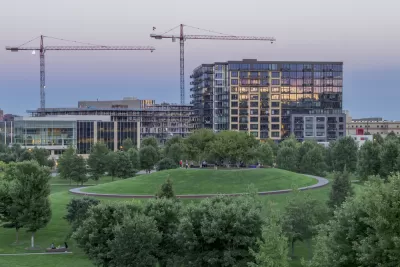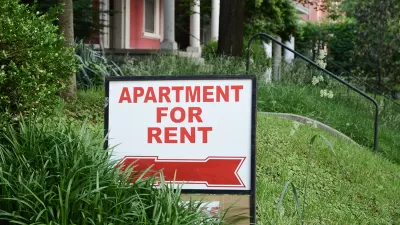The state of Minnesota requires local rent control law to be approved by general election, so the city of Minneapolis is forced to take several preemptory steps to get a rent stabilization ordinance on the ballot.

Solomon Gustavo reports on the growing political support for rent control in Minneapolis, where voters could be offered the chance this November to vote on two questions related to rent control.
The questions would take the first steps toward rent control by asking voters to consider two proposed charter amendments. According to Gustavo, "the questions themselves would not impose any changes to how rental property is regulated in the city. Rather, they seek the ability for the city to do so — by getting around a Minnesota law that currently prevents cities from implementing rent control."
The first of the two proposed charter amendments would grant voters the power to propose, by initiative, a rent stabilization ordinance (i.e., a rent control ordinance). The second proposed amendment would grant the City Council the power to draft a rent stabilization ordinance for voters to subsequently consider.
These initial steps are necessary to work around the state of Minnesota's rent control law, which, writes Gustavo, "says that charter cities in the state can engage in 'controlling rent on private residential property' only if 'the ordinance, charter amendment, or law that controls rents is approved in a general election.'"
FULL STORY: The push for rent control in Minneapolis, explained

Trump Administration Could Effectively End Housing Voucher Program
Federal officials are eyeing major cuts to the Section 8 program that helps millions of low-income households pay rent.

Planetizen Federal Action Tracker
A weekly monitor of how Trump’s orders and actions are impacting planners and planning in America.

Ken Jennings Launches Transit Web Series
The Jeopardy champ wants you to ride public transit.

New Mexico Aging Department Commits to Helping Seniors Age ‘In Place’ and ‘Autonomously’ in New Draft Plan
As New Mexico’s population of seniors continues to grow, the state’s aging department is proposing expanded initiatives to help seniors maintain their autonomy while also supporting family caregivers.

USDOT Waters Down Self-Driving Car Regulations
The agency is reducing reporting requirements for autonomous vehicles and cars with self-driving features, prompting concern among safety advocates who say transparency is essential to the safe deployment of AV technology.

‘Minnesota Nice’ Isn’t so Nice When You Can’t Find a Place to Live
The Economic Development and Housing Challenge Program can help address the scourge of homelessness among Indigenous people.
Urban Design for Planners 1: Software Tools
This six-course series explores essential urban design concepts using open source software and equips planners with the tools they need to participate fully in the urban design process.
Planning for Universal Design
Learn the tools for implementing Universal Design in planning regulations.
Heyer Gruel & Associates PA
Ada County Highway District
Institute for Housing and Urban Development Studies (IHS)
City of Grandview
Harvard GSD Executive Education
Toledo-Lucas County Plan Commissions
Salt Lake City
NYU Wagner Graduate School of Public Service





























